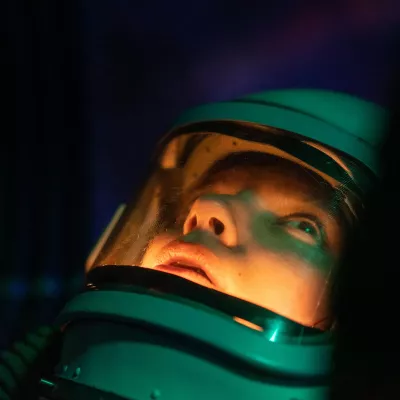Recently, a client’s tissue that had once felt thick and congested suddenly melted under my hands.
“Can you explain to me what just happened?” she asked. “How is it that a change can happen so fast, and what physiologically is responsible for such a dramatic change?”

For a second, I was too stunned to reply. “To be completely honest, I don’t know,” I answered. And yes, I saw the surprise in her facial expression. I am sure she assumed that with my years of practice, efforts in research, and desire to deeply understand the underlying mechanisms of this work I would have a confident and concise answer. Alas, that wasn’t the case.
The longer I practice this amazing work, the more I find unfathomable mystery in the everyday occurrences inside the treatment room. These mysteries are hidden in full view, waiting for us to savor and explore. Far from being discouraged at the amount of the unknown, I find it deeply inspiring and motivating.
A Humbling Profession
The unknown may lead to uncertainty, but that’s perfectly appropriate since the real world of clinical practice is fraught with uncertainty. Every client who presents a musculoskeletal complaint could have myriad reasons contributing to that symptom.
In my early years, the list of possible therapeutic responses to presenting musculoskeletal problems was rather small and, therefore, quite manageable:
-
“For back pain, treat the psoas and the quadratus lumborum.”
-
“Release the suboccipitals and most headaches will disappear.”
However, as my knowledge base grew and the possible reasons multiplied, I became confused and overwhelmed by the choices. In response, I was tempted to listen to confident voices with easy explanations for the complexity I saw in the clinic.
At the heart of this is a common misunderstanding: the belief that increasing knowledge will remove uncertainty and make our clinical experience more predictable. It’s a lovely idea but generally refuted by real-world practice. Life in this profession will humble you with new and unforeseen challenges.
What I now understand is that the real advantage of depth of knowledge is the ability to adapt to novel situations with a multitude of possible treatment options. When my go-to strategy fails, I have many options to explore until we make progress. Knowledge doesn’t prevent you from getting lost, it teaches you countless ways to get unlost.
And yet I often find myself, even with a lifetime of study, encountering that which surpasses anything explained by my current understanding. I see this every day in the clinic, often disguised in the simplest questions from clients like the one posed at the beginning of this column.
Getting to Deeper Understanding
What are the mechanisms behind the many remarkable experiences in the clinic? How should we respond to these seemingly simple but often profound questions?
I’d like to suggest two responses to avoid:
-
First, avoid a reflexive answer, perhaps one you were told in school or by someone who professed to have a confident answer.
-
Second, avoid the temptation to ascribe the therapeutic encounter as ultimately unknowable, negating the process of disciplined practice and skill development necessary for mastery.
Intuitive practice means you understand something so deeply, you don’t have to think about it. The application of massage therapy is decidedly a skill, one requiring many facets, such as a deep knowledge of functional anatomy, excellent palpation skills, and the soft-skills acumen that increase our ability to connect with other human beings. Skills improve with reflective practice and discipline.
Perhaps the best starting point is to first admit that you don’t know. Years ago, I feared that clients would interpret this as a deficit. Conversely, many clients have said I was the first health-care provider to admit I didn’t know. That admission must then be followed by a relentless pursuit of deeper understanding, even with the full knowledge that the ultimate answer might be forever elusive.
Like a child chasing a blowing leaf across a meadow, the joy is in the pursuit. I have witnessed this childlike sense of wonder in my meetings with many celebrated scientists in various fields. Their infectious curiosity is the wellspring of their passionate efforts to dive deeply into the realms of mystery and return with knowledge that benefits us all.
Here’s to having a childlike sense of wonder, unending curiosity, and embracing the unknown.








